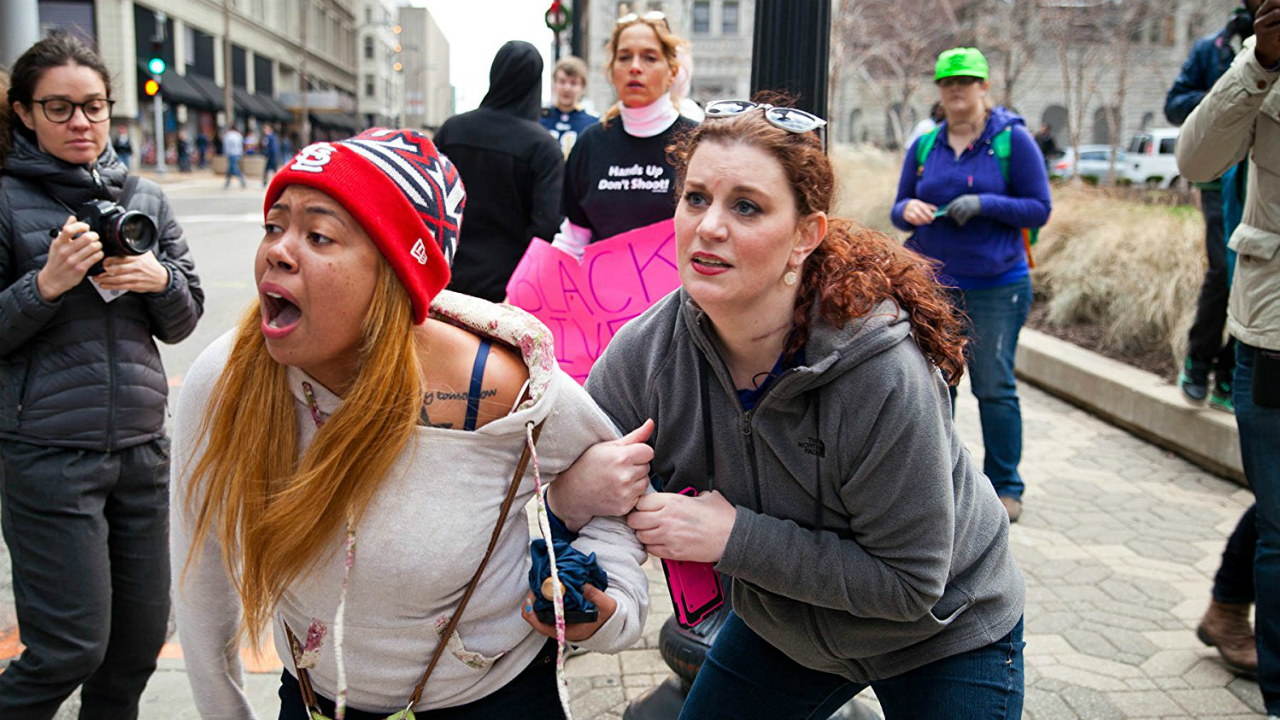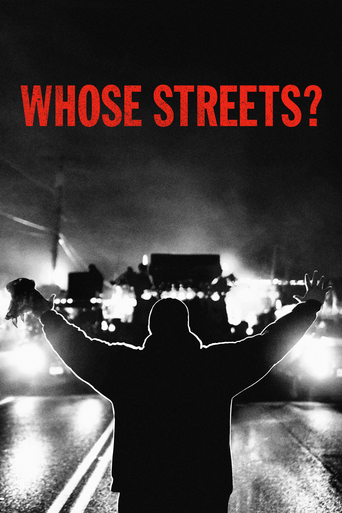

The people who gave this movie a bad review for the reasons they provided need to read a history book. I am not even American and I know that this kind of stuff is not pushing an agenda of any kind. It's continuing a centuries long struggle that unfortunately seems to have no end.This documentary was emotional and powerful and told the story from a point of view many of us cannot possibly understand because we have not lived it. The only problem I have with this movie is that it doesn't contain more information from the people involved. I wanted even more interviews and more footage.
... View MoreThis documentary indeed examines a particular social and cultural phenomenon, but not the one that it claims it analyzes.The real leitmotif here is the relatively recent advent, the zenith and the unchallengeable reign of the so-called Post-Truth Era which we're all enabling in one way or another. In that tenor, the message this movie disseminates, and even promulgates, happens to be virtually diametrically opposed and recusant to the one the author declares to be the documentary's objective.Some of the smartest, most capable and highest paid professionals in the U.S. and the European Union work in the field of disinformation and prevarication. These are the propagandists - the PhD's in spin-doctoring. Their objective is to create such a cacophony in, what Jurgen Habernas calls, Öffentlichkeit - a public space outside of the control by the state, where individuals exchange views and knowledge.This is what I, personally, got the strongest sense from in this movie - the cacophony, since it engenders the best possible environment for circumvention of the objective truth. Ultimately, there little doubt in my mind that it is entirely within these talented public sphere operatives' and propagandists' possibilities to render the truth largely irrelevant.
... View MoreDamon Davis and Sabaah Folayan, activist filmmakers, are the creators of Whose Streets?", a documentary about the "uprising" in Ferguson, Missouri, following the infamous 2014 fatal police shooting of a black teenager.As editors, both Davis and Folayan are exceptionally talented, as they stitched together a great deal of disparate video footage (mostly covering the disturbances that broke out after the police shooting) and formed it into coherent whole. There are no interviews done by the filmmakers however, and no real attempt to understand the roots of the community's resentment. Instead, one must fend for oneself in gleaning insights from the denizens of Ferguson who for the most part are good at expressing anger and rage but not so good at communicating the real reasons for the resentment that undoubtedly stems (at its core) from the legacy of slavery.Davis and Folayan take an uncritical look at the Ferguson activists and protesters who paint themselves as perennial victims of police brutality and institutional racism. There is no hint that maybe not all of the Ferguson residents are acting in their own best interest and maybe some of them are actually self- destructive in their exuberance to right societal wrongs. Like the protesters, Davis and Folayan agree (with them) that change only comes from struggle which sometimes may result in violence in order to wake up the powers that be (one protester argues that the looting of stores cannot be equated with a police shooting resulting in a fatality).However, it's precisely the circumstances surrounding the police shooting of Michael Brown that the film's directors choose not to examine. Instead, the filmmakers accept the Ferguson black community's belief (a veritable fait accompli) that Brown was shot in an unprovoked attack while he had his hands up. There were however, thousands of pages of grand jury testimony (in an unprecedented move) that was actually released to the public. The events of the shooting are complicated-even one very pro-Brown witness (#14), who initially insisted that Brown was "executed," later conceded that Brown was moving toward the officer who was yelling "stop" when he fired the fatal round.While fatal police shootings are not that common, they often seem to be, due to extensive media coverage. There are thousands of police-civilian interactions that happen every day that don't result in violence. Those of course are not covered by the media simply because they're not deemed newsworthy.Ultimately most members of the Ferguson black community were not concerned with the subtleties of grand jury testimony. Brown was the perfect martyr for the cause and they could always use him to justify their rage. Brown was merely a symbol but perhaps the real reasons for the incredible anger had more to do with the day to day police-community interactions that fueled the resentment. As one older black woman put it in response to a white homeowner's grief over the unrest, "you've had to deal with it for two weeks, we've had to deal with it for decades."We find out what started the whole conflagration in the first place: the police stopped Brown for "walking in the middle of the street" with the rather lame excuse that he was "blocking traffic." There was also a great deal of resentment over the quota of traffic tickets that were being handed out to members of the black community-some ended up in jail because they couldn't pay the fines-and this appeared to be a pre-arranged plan by the Ferguson police (so much so that the US Justice Department later overhauled the police department and city government as a result of what they termed unlawful, racially biased practices).The Ferguson protesters did much to demonize the police at every turn- and the explosion of violence fueled by resentment had to have some basis in fact. The contempt many police officers had for those they were serving in the Ferguson black community, had to exist, as evidenced by the level of rage, depicted in every scene in the film. On the other hand, when protesters are continually "spitting in your face," do they really expect the police to act with more sensitivity toward them? This is a two way street-it's not really important who started it, but there is no such thing as one side who is always the victim.Davis and Folayan unfortunately do not have the luxury of advanced age to draw more nuanced conclusions about the state of race relations in the US today. One startling opportunity lost is the case of Brittany, an activist who was arrested for being part of a group who drags an innocent motorist out of a car. Suddenly the loud-mouthed protester is worried about having a felony on her record. The closing titles inform us that Brittany wasn't charged with the felony but we would have liked to have known more about her case and why the charges were ultimately dropped or reduced.Instinctively, the powers that be sensed that instead of coming down too hard on the protesters, they would let them blow off steam. It was no accident that the majority of the protesters were young people and a lot of this adolescent rage was in a sense a rite of passage fueled by the marginalized position they found themselves in-but in addition to this natural inclination to rebel against their elders (and authority in general), there is also the reality of years of economic discrimination that the black community has suffered from, preventing many from moving up to middle-class solvency.Did the young protesters really accomplish their ultimate aim? (the redistribution of wealth in our society). The answer is no as that is only a pipe dream of adolescence. Older people invariably will intone "change is slow"-and that is the reality of the world as it's always been.
... View MoreI came here to read about and review this documentary after viewing. I was so moved by it that I am leaving my first review of anything. Then I read the last two reviews, both posted on November 16, 2017. Neither are reviews of the documentary but attacks on Mike Brown. I won't get into how I grew up within 10 miles in of Ferguson or about how I've lived in St. Louis for 50. How I know that, even though I'm a white woman, racism is alive and well in St. Louis. This documentary was a very accurate portrayal of what the reality is for black people (and other POC) in St. Louis. I've witnessed it over and over again. The documentary was very well done. It was straight forward and real. Everybody should watch it.
... View More